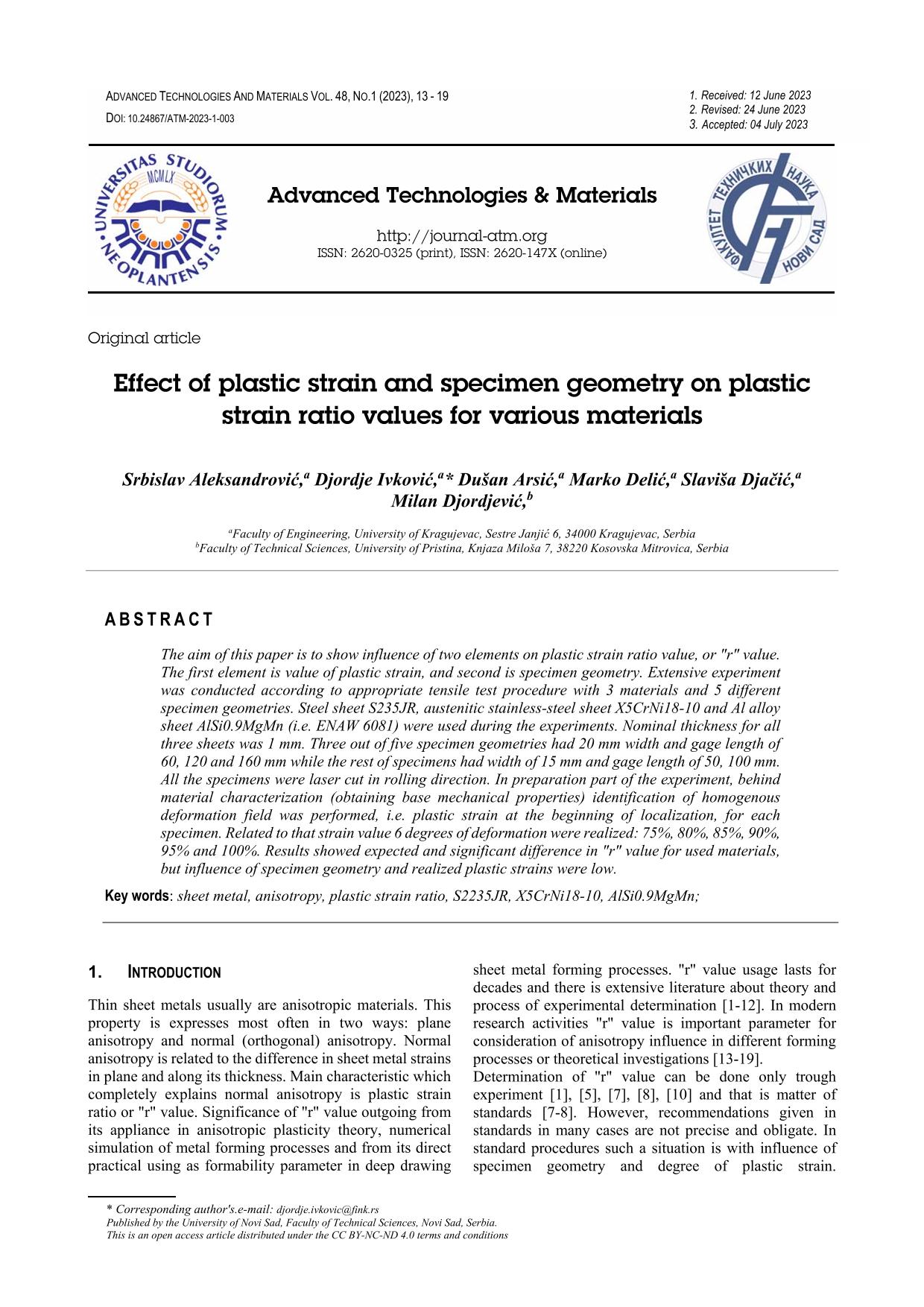Effect of plastic strain and specimen geometry on plastic strain ratio values for various materials

Published 2023-06-20
abstract views: 308 // Full text article (PDF): 138
Keywords
- sheet metal,
- anisotropy,
- plastic strain ratio,
- S2235JR,
- X5CrNi18-10
- AlSi0.9MgMn ...More
How to Cite

This work is licensed under a Creative Commons Attribution 4.0 International License.
Abstract
The aim of this paper is to show influence of two elements on plastic strain ratio value, or "r" value. The first element is value of plastic strain, and second is specimen geometry. Extensive experiment was conducted according to appropriate tensile test procedure with 3 materials and 5 different specimen geometries. Steel sheet S235JR, austenitic stainless-steel sheet X5CrNi18-10 and Al alloy sheet AlSi0.9MgMn (i.e. ENAW 6081) were used during the experiments. Nominal thickness for all three sheets was 1 mm. Three out of five specimen geometries had 20 mm width and gage length of 60, 120 and 160 mm while the rest of specimens had width of 15 mm and gage length of 50, 100 mm. All the specimens were laser cut in rolling direction. In preparation part of the experiment, behind material characterization (obtaining base mechanical properties) identification of homogenous deformation field was performed, i.e. plastic strain at the beginning of localization, for each specimen. Related to that strain value 6 degrees of deformation were realized: 75%, 80%, 85%, 90%, 95% and 100%. Results showed expected and significant difference in "r" value for used materials, but influence of specimen geometry and realized plastic strains were low.

